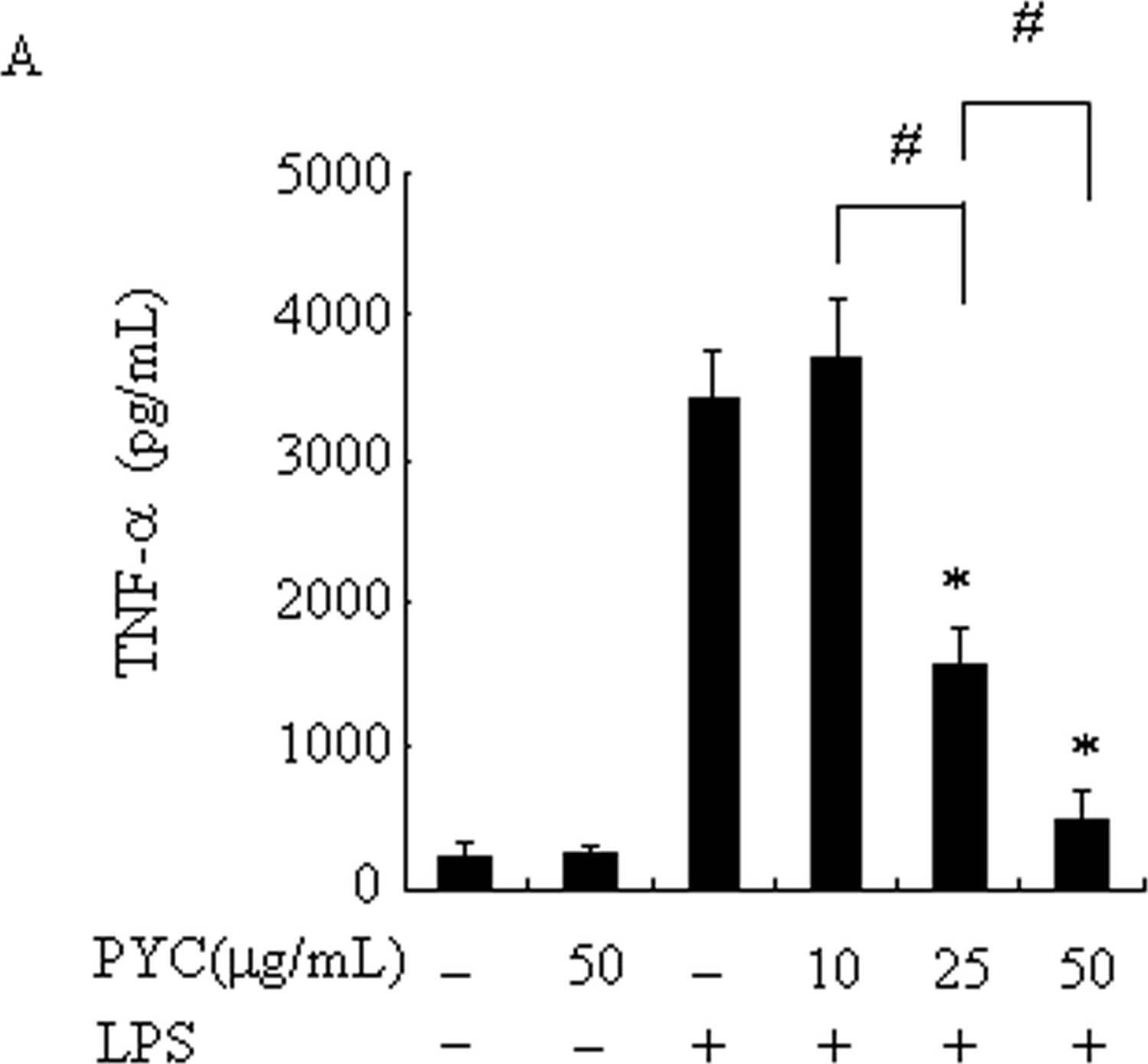TNF-alpha: ELISA Kits
TNF-alpha (Tumor necrosis factor alpha) plays a central role in inflammation, immune system development, apoptosis, and lipid metabolism. TNF-alpha was first identified as a cytotoxic factor produced by macrophages capable of killing mouse tumor cells. It is the prototypic ligand and along with Lymphotoxin-alpha, were identified as the first members of the TNF superfamily. Active TNF-alpha and other members of the TNF superfamily exist as a homotrimer with high structural homology. Receptor binding occurs at the interface of two TNF-alpha monomers. And receptor activation occurs when all three monomer interfaces are engaged with a receptor. For TNF-alpha, receptor binding and activation occurs through TNF R1 or TNF RII, and subsequently leads to activation of NF-kB or MAPK signaling pathways. Another pathway that TNF-alpha can activate utilizes the death domain of TNF RI to induce apoptosis. TNF-alpha promotes the inflammatory response largely through NF-kB signaling, and inhibition of TNF-alpha has proven successful in treating many autoimmune disorders. TNF-alpha is also present on the cell surface as membrane-bound TNF-alpha can induce the lysis of neighboring tumor cells and virus infected cells. TNF-alpha protein is translated as a type II transmembrane protein containing an N-terminal transmembrane domain. The soluble cytokine is released from its cell-anchoring TM domain by proteolytic processing by metalloproteases.
29 results for "TNF-alpha ELISA Kits" in Products
29 results for "TNF-alpha ELISA Kits" in Products
TNF-alpha: ELISA Kits
TNF-alpha (Tumor necrosis factor alpha) plays a central role in inflammation, immune system development, apoptosis, and lipid metabolism. TNF-alpha was first identified as a cytotoxic factor produced by macrophages capable of killing mouse tumor cells. It is the prototypic ligand and along with Lymphotoxin-alpha, were identified as the first members of the TNF superfamily. Active TNF-alpha and other members of the TNF superfamily exist as a homotrimer with high structural homology. Receptor binding occurs at the interface of two TNF-alpha monomers. And receptor activation occurs when all three monomer interfaces are engaged with a receptor. For TNF-alpha, receptor binding and activation occurs through TNF R1 or TNF RII, and subsequently leads to activation of NF-kB or MAPK signaling pathways. Another pathway that TNF-alpha can activate utilizes the death domain of TNF RI to induce apoptosis. TNF-alpha promotes the inflammatory response largely through NF-kB signaling, and inhibition of TNF-alpha has proven successful in treating many autoimmune disorders. TNF-alpha is also present on the cell surface as membrane-bound TNF-alpha can induce the lysis of neighboring tumor cells and virus infected cells. TNF-alpha protein is translated as a type II transmembrane protein containing an N-terminal transmembrane domain. The soluble cytokine is released from its cell-anchoring TM domain by proteolytic processing by metalloproteases.
| Sensitivity: | 7.21 pg/mL |
| Applications: | ELISA |
| Assay Range: | 10.9 - 700 pg/mL (Cell Culture Supernates, Serum, EDTA Plasma, Heparin Plasma) |
| Sensitivity: | 7.02 pg/mL |
| Applications: | ELISA |
| Assay Range: | 31.3 - 2,000 pg/mL (Cell Culture Supernates, Serum, EDTA Plasma, Heparin Plasma) |
| Assay Range: | 31.2 - 2,000 pg/mL |
| Applications: | ELISA |
| Sensitivity: | 0.049 pg/mL |
| Applications: | ELISA |
| Assay Range: | 0.156 - 10 pg/mL (Serum, EDTA Plasma, Heparin Plasma) |
| Sensitivity: | 5 pg/mL |
| Applications: | ELISA |
| Assay Range: | 12.5 - 800 pg/mL (Cell Culture Supernates, Serum, EDTA Plasma, Heparin Plasma) |
| Assay Range: | 15.6 - 1,000 pg/mL |
| Applications: | ELISA |
| Assay Range: | 62.5 - 4,000 pg/mL |
| Applications: | ELISA |
| Sensitivity: | 5 pg/mL |
| Applications: | ELISA |
| Assay Range: | 23.4 - 1,500 pg/mL (Cell Culture Supernates, Serum, EDTA Plasma, Heparin Plasma) |
| Assay Range: | 31.2 - 2,000 pg/mL |
| Applications: | ELISA |
| Sensitivity: | 4.2 pg/mL |
| Applications: | ELISA |
| Assay Range: | 7.8 - 500 pg/mL (Cell Culture Supernates, Serum, EDTA Plasma, Heparin Plasma) |
| Sensitivity: | 0.481 pg/mL |
| Applications: | ELISA |
| Assay Range: | 2.24 - 7,000 pg/mL |
| Sensitivity: | 0.295 pg/mL |
| Applications: | ELISA |
| Assay Range: | 0.781 - 50 pg/mL (Serum, EDTA Plasma, Heparin Plasma) |
| Assay Range: | 31.2 - 2,000 pg/mL |
| Applications: | ELISA |
For use with catalog number HSTA00E, SSTA00E, and PHSTA00E
| Applications: | Ctrl |
| Assay Range: | 125 - 8,000 pg/mL |
| Applications: | ELISA |
For use with catalog numbers DTA00D, STA00D, and PDTA00D
| Applications: | ELISA |
| Assay Range: | 15.6 - 1,000 pg/mL |
| Applications: | ELISA |
| Assay Range: | 31.2 - 2,000 pg/mL |
| Applications: | ELISA |
| Assay Range: | 15.6 - 1,000 pg/mL |
| Applications: | ELISA |
| Applications: | ELISA |
| Assay Range: | 31.2 - 2,000 pg/mL |
| Applications: | ELISA |
| Applications: | ELISA |
| Applications: | ELISA |
For use with catalog number QK210
| Applications: | Ctrl |
| Assay Range: | 31.2 - 2,000 pg/mL |
| Applications: | ELISA |



















![ELISA: Rat TNF-alpha ELISA Kit (Colorimetric) [NBP1-92681] ELISA: Rat TNF-alpha ELISA Kit (Colorimetric) [NBP1-92681]](https://resources.bio-techne.com/images/products/TNF-alpha-ELISA-Kit-[Biotin]-ELISA-NBP1-92681-img0001.jpg)

![ELISA: Human TNF-alpha ELISA Kit (Colorimetric) [NBP1-91170] ELISA: Human TNF-alpha ELISA Kit (Colorimetric) [NBP1-91170]](https://resources.bio-techne.com/images/products/TNF-alpha-ELISA-Kit-ELISA-NBP1-91170-img0001.jpg)
![ELISA: Mouse TNF-alpha ELISA Kit (Colorimetric) [NBP2-31085] ELISA: Mouse TNF-alpha ELISA Kit (Colorimetric) [NBP2-31085]](https://resources.bio-techne.com/images/products/Mouse-TNF-alpha-ELISA-Kit-Colorimetric-ELISA-NBP2-31085-img0002.jpg)
